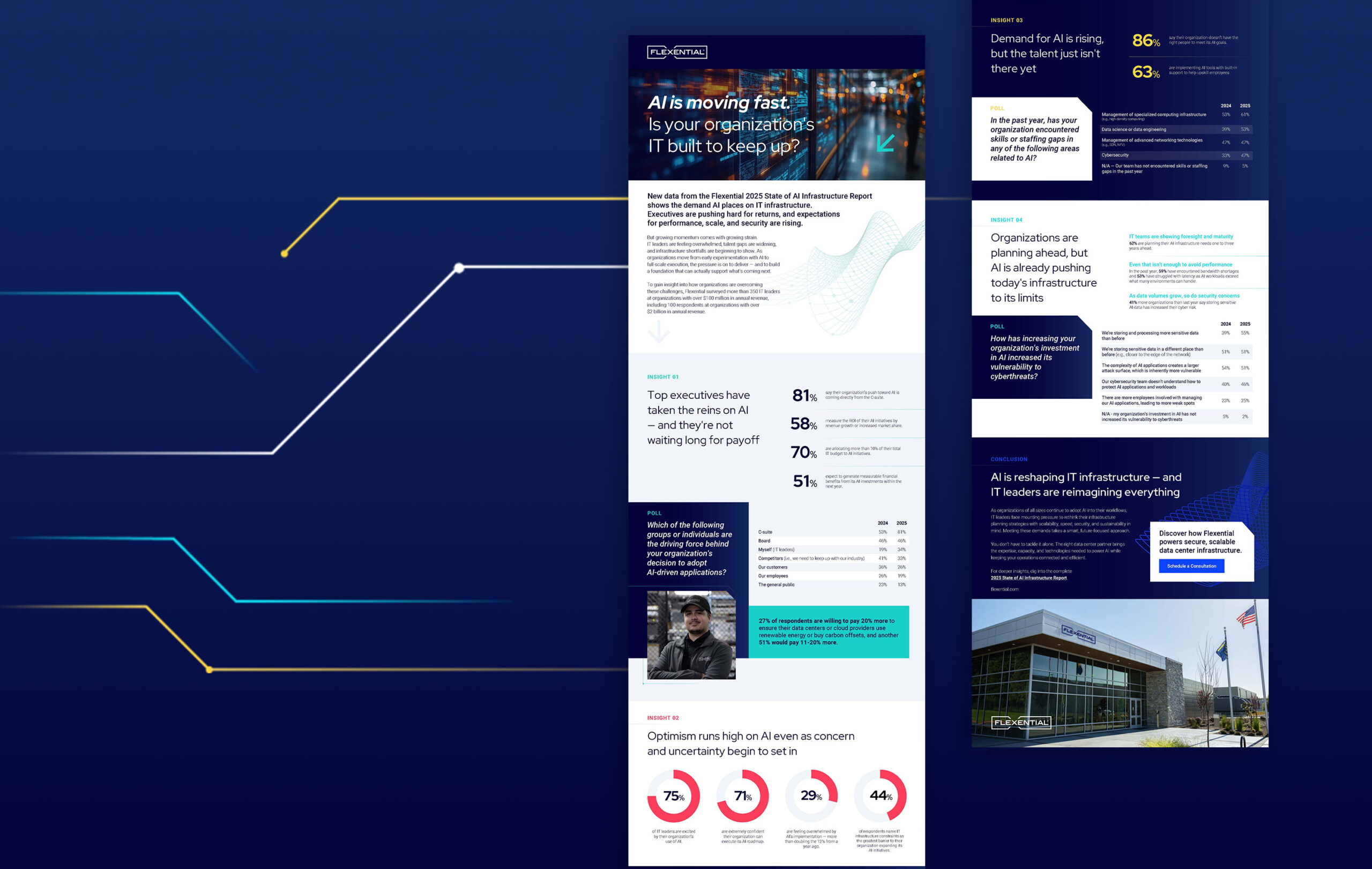
What we did
Creative
Content Creation
Social Media
Industry
Background
Flexential operates in a crowded data center and colocation market where AI has become a dominant topic of conversation. The company needed to break through the noise and establish itself as a leading, trusted voice in AI infrastructure.
Challenge
Flexential wanted to move beyond typical marketing content to produce original research that would establish them as the definitive voice on AI infrastructure, while fueling ongoing media conversations.
The company needed research that would be both newsworthy enough for journalists to cite and valuable enough for IT decision-makers to download and share.
Solution
We developed an original research study from start to finish, drafting questions, coordinating the survey, analyzing the results, and writing and designing a report that goes deeper than many other industry reports, connecting the dots across findings to create a narrative about the state of the industry.
Our editorial team transformed the raw survey data into a compelling story about AI infrastructure pressures, planning and strategy, talent gaps, and networking and security concerns.
Our creative team designed the final report, as well as social media graphics and an infographic highlighting the main takeaways.
Results
The study established Flexential as a credible source for journalists covering AI infrastructure trends, with multiple outlets citing specific data points from the research.
The report generated coverage across CIO Dive, DRJ, Solutions Review, Yahoo News, and other target media, and it continues to fuel conversations with reporters and prospects alike.
By the Numbers
FAQ
Because proprietary data earns authority you can’t claim with opinion alone—reporters cite it, buyers reference it in planning, and competitors can’t copy it overnight.
Earned media and backlinks, higher domain authority/SEO, inbound leads and meeting creation, faster sales cycles (data answers evaluation questions), and stronger analyst/investor credibility.
Timely questions, clear deltas (MoM/YoY, segment splits), crisp charts, and implications (“what this means for cost, risk, timeline”). If it teaches something new and actionable, it travels.
Be transparent: publish methodology, sample, roles, regions, and exact question wording; disclose limitations; don’t bury inconvenient findings; separate facts from marketing claims.
Recruit the people who make or influence the relevant decisions, stratify by role/company size/region, and aim for a representative sample you can cut meaningfully—then share crosstabs so others can validate.
Use a hybrid: ungate the exec summary, key charts, and press page (for reach), and gate the full report or interactive cuts (for lead capture). Always provide a non-gated citation page for journalists.
Equip teams with stat-based talk tracks, objection handlers, vertical one-pagers, and ROI calculators tied to findings; use the data in webinars, RFP answers, and executive briefings.
Plan a cadence: flagship annual report plus periodic “pulse” notes, regional/vertical breakouts, and quick reacts when news breaks—each pointing back to the core study.
Track: tier-1/trade citations and domain-authority gains, backlink quality, high-intent downloads, webinar attendance, sourced opportunities, meeting/demo creation, and coverage→pipeline correlations.
Legal/privacy (review and anonymize), bias (neutral question design, balanced recruitment), overclaiming (stick to facts; avoid performance promises), and trust erosion (publish the good and the inconvenient).



